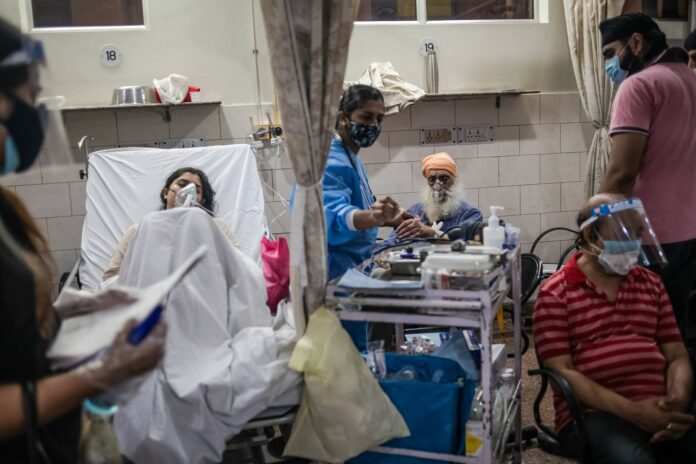
According to doctors in India, multiple COVID-19 patients are developing a rare and fatal black fungus infection, called mucormycosis.
India is currently battling a deadly second wave that has managed to completely wreak its healthcare system. On Friday, India’s official tally of COVID-19 infections crossed the 24 million mark. Moreover, for the third time in a row, the country has reported 4,000 daily deaths. To make matters worse, cases of rare black fungus infections are now showing up among COVID-19 patients in the country.
According to local news media reports, around 200 cases of mucormycosis have emerged in the state of Maharashtra. The patients had recently recovered from COVID-19. Eight of these patients have died from the fungal infection. المراهنات على المباريات Additionally, India’s capital Delhi and the state of Gujrat are also reporting cases of black fungus in COVID-19 patients.
We have heard that in some areas, people who are COVID-infected or recovered suffer from mucormycosis, but there is not a big outbreak of it. We are watching and monitoring.
Dr V.K. Paul, head of India’s Covid task force
Mucormycosis, or black fungus, is a rare but lethal fungal infection. It is caused by exposure to mucor molds commonly found in soil, decaying organic matter, and even in the air. Most people get infected by breathing in the fungal spores present in the air, and sometimes the fungus enters the body through cuts on the skin. Once inside the body, the fungus affects the brain, sinuses, lungs, eyes, and even the heart. Although the illness is rare, it is fatal in diabetics and immunocompromised individuals.
With an overall mortality rate of 50%, mucormycosis often presents with facial swelling, blurred vision, stuffy or bleeding nose, and black lesions around the nose and mouth. In India, multiple patients had to undergo surgical eye removal to prevent the spread of infection to the brain.
Doctors Blame Increasing Use of Steroids
Most of the cases in India have occurred among diabetics recovering from COVID-19. Moreover, due to the lack of beds in hospitals, many of the patients had to receive treatment at home. Further exposing them to not-so-sterile environments.

Diabetes lowers a person’s immunity, putting them at risk of developing mucormycosis. Additionally, when combined with the use of steroids, the risk of fungal infection increases further. Although steroids help treat severe infections in hospitalized patients, they also suppress the immune system and raise the blood sugar levels in COVID-19 patients. Thus, lowering the immunity and exacerbating the risk.
You are using steroids to reduce the hyperimmune response, which is there in Covid. But you are reducing the resistance to other infections.
Dr. K. Srinath Reddy, Public Health Foundation of India
Around 5,000 orders of an antifungal, amphotericin B, have been purchased by the government in Gujrat in response to the increasing infections. Although government officials are not labelling it as an outbreak, others are warning of the increase in severity and frequency of the infection.
Black Fungus Outbreak in Pakistan
Several healthcare facilities across Pakistan are now also reporting black fungus infections among COVID-19 patients. While talking to The News, a physician working at a tertiary care hospital in Karachi, Pakistan reported that at least 4 patients had died due to the complication. However, healthcare centres are not currently reporting the cases as they are difficult to diagnose.
Infectious diseases specialists in the country believe that the prolonged ICU stay in severely infected patients, coupled with uncontrolled diabetes and the use of steroids further worsens the situation. اون لاين كازينو Moreover, the hot and humid climate of India and Pakistan is ideal for the growth of these molds. Thus, providing a possible explanation for the rising numbers.



